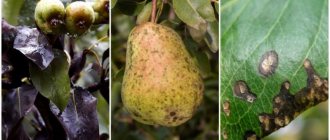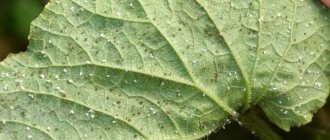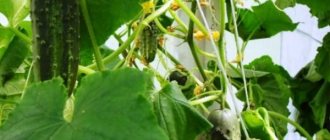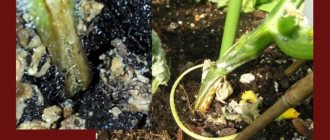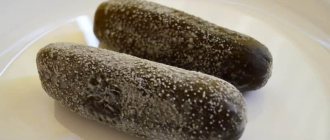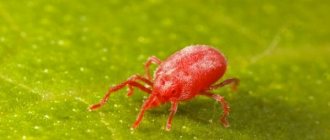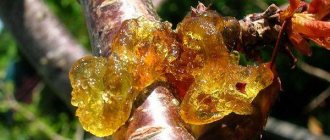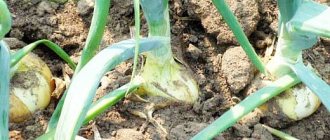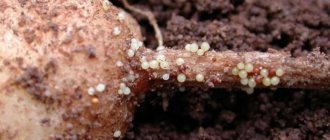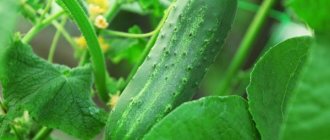Home Vegetable beds
Powdery mildew is the most common disease of cucumbers grown indoors. This is facilitated by frequent increases in humidity levels in greenhouses and temperature changes. The causative agent of the disease is a fungus, so all measures to combat the disease are aimed at its destruction.
- 2 Copper sulfate
- 3 Baking soda
- 4 Colloidal sulfur
- 5 Potassium permanganate
- 6 Chemical and biological drugs
- 7 Milk and iodine
- 8 Mullein infusion
- 9 Wood ash
- 10 Garlic
- 11 Kefir
Copper sulfate
Copper sulfate has a powerful suppressive property and is more convenient for use in a greenhouse due to its high solubility than other copper-containing fungicides (Bordeaux mixture, for example). The product must be diluted strictly according to the instructions, namely 30-50 g per 10 liters of water.
It is important to know that vitriol is toxic not only to the pathogen, but also to plants, so exceeding the dosage is highly not recommended. Spraying is repeated at intervals of a week until the plaque completely disappears.
Milk serum
An effective folk remedy that quickly fights the disease and also blocks its further spread is whey. To prepare the solution, you need to prepare the following ingredients:
- clean water – 5 l;
- whey – 0.5 l;
- pharmaceutical ammonia – 25 ml.
Next you need to combine all the ingredients, and then mix the solution thoroughly. Ammonia helps reduce the level of acidity, which vegetables do not particularly like. In addition, alcohol contains elements that create an unfavorable environment for the development of powdery mildew. Before spraying, you need to remove all diseased leaves from the bushes.
Colloidal sulfur
Colloidal sulfur should be used at the first signs of the disease. For treatment, sulfur is diluted with water in an amount of 15 g per bucket.
It is worth noting that the effectiveness of the drug is affected by the temperature in the greenhouse. The fact is that sulfur itself is not toxic to the fungus, but the resulting hydrogen sulfide is harmful.
The active formation of this substance occurs at a temperature of 35 ºС, and under this condition the fungus dies in 1-3 days, but if the temperature is lower, the use of colloidal sulfur is ineffective or useless.
Signs
Certain plant conditions contribute to the infection of plantings by ashtray:
- cool and damp weather;
- plantings thickened beyond the norm;
- high nitrogen content in the soil structure;
- excessive drying and subsequent flooding of the soil;
- watering the area at a time when the top layer of soil is still quite wet.
The hallmark of the disease is a white fluffy coating on the surface of the foliage. The first signs of damage to cucumbers by a spore-bearing fungus are round whitish spots or light reddish spots. First they can be seen on the top of the leaf, and later on the bottom. Over time, they colonize all green areas, right down to the shoots and roots. Some lashes, in case of severe damage, can dry out. The leaves become curled and have a loose surface. Plants are weakened, there is an acute lack of oxygen, which often provokes their death.
Very favorable conditions for the appearance of ashtrays exist inside the greenhouse. There, air humidity can go off scale up to 80% and there is droplet moisture. The first signs of the disease can be observed near open windows. Often the disease can be seen on the foliage of cucumbers, less often it is located on the cotyledons. The infection spreads from leaves and shoots located close to the soil surface. Fruits infected with the virus are prone to cracking and rotting.
Chemical and biological drugs
To combat powdery mildew, most gardeners use chemical fungicides. These drugs, as a rule, are universal and have a wide spectrum of resistance to many diseases not only of cucumbers, but also of other crops.
Most popular:
- Topaz: stops the proliferation of fungus within 2-3 hours after treatment and lasts for about a week, safe for the plants themselves.
- Karatan: 2-3 sprayings are sufficient, but treatment can be carried out no later than 20 days before harvest.
Less effective, but safer means of protection against fungus are organic fungicides, such as Baktofit, Aktofit, Trichodermin, etc. These products contain spores of antagonistic fungi, the activity of which displaces the pathogen of powdery mildew.
In addition, biofungicides have a stimulating effect on the plants themselves due to the beneficial microelements in their composition. Chemical and biological fungicides can and are recommended to be used simultaneously.
Description of the disease
Powdery mildew is also called powdery mildew or powdery mildew. The causative agent of this disease is the fungus Oidium erysiphoides. The pathogen can reproduce in two ways. During sexual reproduction, the fungus forms cleistothecia, consisting of hyphae and containing an odd number of spore bags. Each of them contains 4-8 ascospores. For wintering, cleistothecia require plant remains. After the onset of sustained heat, the ascospores mature and are released, infecting other plants.
With asexual reproduction, the infection spreads through conidia. These immobile spores form a whitish coating on the surface of the leaf blades. Conidia are spread throughout plants by gusts of wind, raindrops and other means.
The proliferation of the fungus is favored by damp weather with air temperatures from +16 to +20 degrees. Germination of conidia occurs most actively at a humidity of 95%. The temperature should be between 20 and +25 degrees. The spread of ashtray is especially active if there is a large difference between day and night temperatures.
Important The first signs of infection can be noticed in rainy, cold weather, when the air temperature drops to +10 degrees.
In a greenhouse, whiteness also develops at normal air temperatures if the cucumbers are planted too densely or there is no ventilation. Then the cause of the spread of the disease is high soil and air humidity.
The rapid penetration of spores into plant tissues is facilitated by cold water for irrigation. It causes especially great harm in hot weather, when leaves and fruits become sluggish and poorly resistant to infection. Another factor contributing to decreased immunity is increased nitrogen content in the soil.
From the moment a plant is infected with powdery mildew until the first symptoms appear, 3 to 5 days pass. During the growing season, diseased bushes themselves become sources of spread of the fungus. Spores fall on other plants with gusts of wind and can be carried by a person or animal.
Varieties of cucumbers for open ground (Self-pollinating)
Milk and iodine
The milk-iodine solution has a double effect in the fight against fungus: lactose covers the plants with a film that prevents the spread of pathogenic flora, and iodine kills it. The mixture is prepared as follows: for 10 liters of water, take 1 liter of milk and 25 drops of iodine. It is important to mix the product well, as pharmaceutical iodine can burn the leaves.
You need to spray the cucumbers completely, not forgetting the back side of the leaf. It is also recommended to treat the tree trunk area.
Whitefly
Whitefly is a dangerous pest of cucumbers not only indoors, but also in open ground. This is a white or yellowish insect 1-1.5 cm long with two pairs of wings. The whitefly is thickly covered with white, waxy pollen. The insect larvae are pale green, oval and flat, no more than 0.3 mm long, with short hairs and waxy secretions. At the end of the abdomen, each of them has two thin threads.
Signs of whitefly damage to cucumbers
Whitefly has attacked your cucumbers if you notice the following signs:
- a large number of small light spots appeared on the leaves;
- large colonies of small, white flying insects are visible on the underside of the leaves;
- larvae are visible on the underside of the leaves - small, translucent, yellowish scales;
- Soon all the leaves turn yellow and fall off.
Prevention and control measures for whitefly on cucumbers
To get rid of whiteflies, you will have to try and perform a number of measures:
- disinfect the soil in the greenhouse every year after harvesting;
- choose high-quality planting material;
- promptly remove and destroy weeds (wort and nettles) on which the insect can settle;
- In winter, be sure to freeze the greenhouse by opening doors and vents in frosty weather - after a few days at temperatures below –12°C, the insect dies.
To combat whitefly on cucumbers, be patient.
If the whitefly does settle on your cucumbers, use the following control measures:
- spray greenhouse plants with green soap;
- catch whiteflies with suction devices such as a vacuum cleaner;
- Lubricate yellow polyethylene sheets with non-drying glue and hang them inside the greenhouse at a height of about 10 cm above the plantings.
There are a number of chemicals that are also effective in controlling whiteflies. The most popular and effective are:
- Vertimek;
- Aktellik;
- Aktara;
- Arrivo;
- Fitoverm;
- Confidor;
- Pegasus;
- Tanrek;
- Fufaphone.
As you can see, cucumbers have more than enough enemies, and therefore you should always be extremely attentive to your “wards”.
Kefir
Microorganisms contained in fermented milk products are capable of destroying powdery mildew spores. Because of this, many gardeners use kefir. It is diluted with water in a ratio of 1:4, and the resulting mixture is sprayed on the plants.
It is recommended to repeat the treatment every three days. It is worth noting that the method cannot be used if aphids are possible on the site.
- Author: Inna Kiseleva
Rate this article:
- 5
- 4
- 3
- 2
- 1
(1 vote, average: 5 out of 5)
Share with your friends!
Cucumber varieties resistant to powdery mildew
To reduce the likelihood of the fungus spreading, hybrids and varieties that are not susceptible to it are grown on the site. The manufacturer indicates this information on the seed packet. The hybrid variety Kurazh F1 demonstrates good resistance to fungus. He belongs to the early ripening ones. The first fruits can be picked 45 days after germination. It produces fruits suitable for eating fresh or canned. The yield of the variety reaches 8.5 kg per plant.
The Ural Express F1 hybrid, resistant to powdery mildew and peronosporosis, grows well even in a shaded place. It belongs to the ultra-early varieties, suitable for greenhouse cultivation and placement in open beds. Small-sized fruits have a universal purpose.
The Chinese F1 variety tolerates cold weather well and has strong immunity. The first greens can be harvested after 50 days. It has long fruits with dark green skin. The variety bears fruit well until autumn.
Diseases of cucumbers in a greenhouse and their treatment. (Photo)
The Mazai F1 hybrid is suitable for growing in a greenhouse. It resists various fungal diseases well. This variety ripens early and produces small fruits suitable for fresh or canned consumption. In the south, in warm climates, it can be planted in an open area.
Powdery mildew is dangerous because it spreads quickly. It causes plant death and reduces yields. Therefore, it is necessary to follow the rules of agricultural technology to reduce the likelihood of the spread of this disease. When infected, you need to assess the extent of the spread of the fungus in order to choose the right treatment.
Prevention
The first step in preventing powdery mildew on cucumbers in your beds is maintaining crop rotation. It is necessary to constantly change the places for sowing the same crops, since over time in one place there is a great possibility of the proliferation of microbes and diseases typical of a particular plant. Also, to get a healthy harvest, you need to follow some more rules:
- Fertilizing with potassium and phosphorus fertilizers increases the resistance of cucumbers to this disease.
- Every autumn you need to thoroughly dig up the beds, removing absolutely all residues and weeds.
- To prevent powdery mildew on cucumbers in greenhouses, it is necessary to carefully monitor the maintenance of suitable moisture and a temperature of 23-25 degrees.
- The first stems and leaves treated with plaque must be immediately destroyed and burned.
- Sowing hybrids that are resistant and invulnerable to this virus will reduce your chances of “getting to know” it.
Elastic and crispy cucumbers are the pride of any summer resident and gardener. Agree, it’s nice to open a jar of summer fruits grown in your own garden in winter. In this article you can find out how to properly build a greenhouse for cucumbers and what is better: a greenhouse or a greenhouse.
